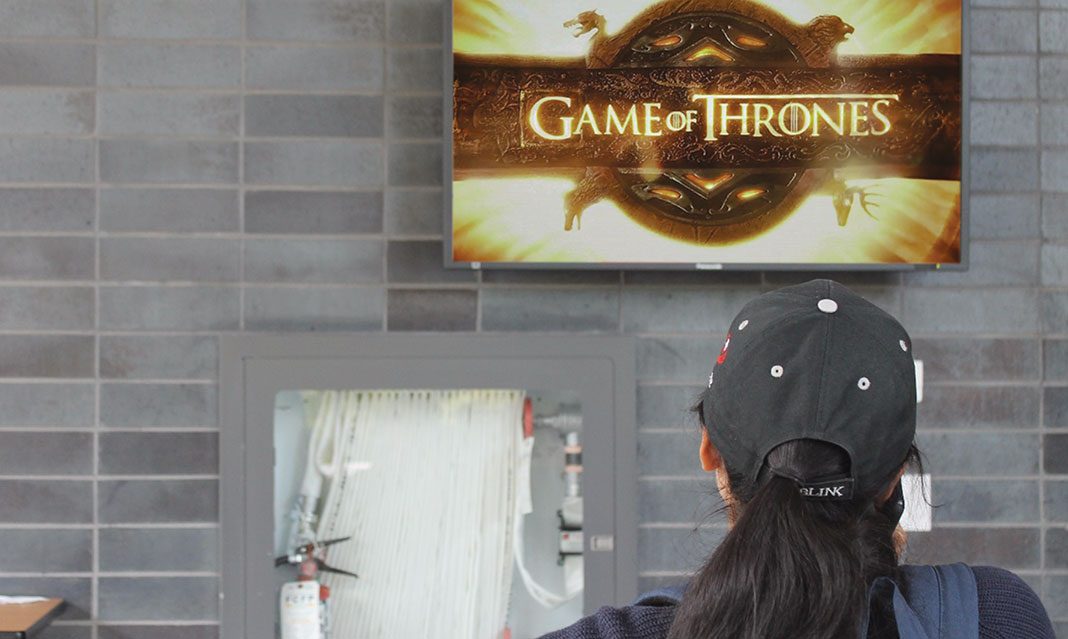A few years ago, people could only watch shows when they were broadcasted on television at their designated time of the week or day. Online streaming on Netflix and YouTube, available on multiple devices, has changed the way we watch TV. TV shows streamed online can be watched from anywhere at any time. Some believe the television set has been reduced to largely an aesthetic in the living room, and broadcast TV is on a decline. But is it really?
“Personally, I don’t know many people with cable TV,” said Erika Roldan, a co-president of the ICCIT Council at UTM, “in my opinion, conventional broadcast TV seems to be declining in popularity, mostly because of online streaming services such as Netflix and Hulu.” Roldan’s opinion was shared by the president of the UTM Anime Club, Brian Vu, who added that the flexibility and freedom that comes with online streaming is making people move away from cable TV. “Shows come at certain times on particular days of the week. Most people can’t take time out of their schedule to watch them on their specific times, and so prefer to stream them online.” Vu describes how this flexibility gives people “the option to watch, what they want, when they want, however much they want and with minimal interruptions.”
Vu and Roldan’s views seem to be represented by information presented in Henry Blodget’s 2012 article, “Don’t Mean To Be Alarmist, But The TV Business May Be Starting To Collapse” in the Business Insider. Blodget compared the downfall of TV in the face of rising number of users taking advantage of online streaming, to the downfall of newspapers with the introduction of the Internet. He writes: “Newspapers were screwed. It just took a while for the changing user behavior to hammer the business. The same is almost certainly true for television.”
Blodget explains that live sports, especially during events such as the Olympics, live news, times of crisis, and special events, seem to be the only things people watch TV for. However, even that seems to be changing with online article postings, along with some news and sports channels offering streaming services. A report from Nielsen in 2011 showed that the percentage of people who watched TV at least once a month dropped from 90 per cent to 83 per cent, with 17 per cent of people never watching TV. While on the other hand, the percentage of people who watch a video online is 84 per cent, higher than the percentage of people who watch TV.
Where services such as Netflix and YouTube seem to be causing the decline of conventional TV, John Doyle argues, in his opinion piece titled, “Conventional television is doing just fine, thanks for asking” in The Globe and Mail, that these services are helping to keep the business alive. Although Sarah Kim, president of UTM/TV, a broadcasting and media production club at UTM, comments, “Professional broadcasting networks need to learn how to adapt and expand into the digital media if they want to keep doing well,” Doyle argues that networks are in fact doing just that—and succeeding. He mentions how networks that have figured out how to monetize the digital world and have profited with niche shows and advertisements directed to the viewer bringing in greater value. Netflix and other streaming services have made people more willing to watch TV on all types of devices, Kim observes. Networks that have taken advantage of this, such as the NBC, have seen an 8% increase in advertising support for their shows, Doyle writes, adding further how, “far from the enemy, streaming turned out to be the kick that conventional TV needed.”
Online streaming seems to be more popular among students in comparison to conventional TV, but it has not sealed its fate just yet. TV businesses, whether network or cable companies, might rise to the challenge and emerge stronger than ever, or fail to do so. What happens next remains to be seen, so stay tuned.



